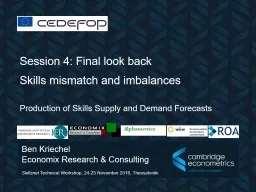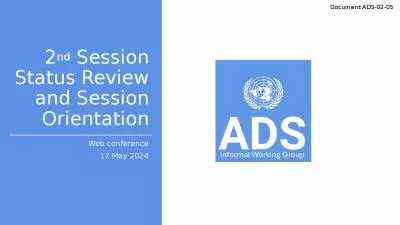PPT-Session 4: Final look back
Author : marina-yarberry | Published Date : 2017-06-30
Skills mismatch and imbalances Production of Skills Supply and Demand Forecasts Ben Kriechel Economix Research amp Consulting Skillsnet Technical Workshop 2425
Presentation Embed Code
Download Presentation
Download Presentation The PPT/PDF document "Session 4: Final look back" is the property of its rightful owner. Permission is granted to download and print the materials on this website for personal, non-commercial use only, and to display it on your personal computer provided you do not modify the materials and that you retain all copyright notices contained in the materials. By downloading content from our website, you accept the terms of this agreement.
Session 4: Final look back: Transcript
Download Rules Of Document
"Session 4: Final look back"The content belongs to its owner. You may download and print it for personal use, without modification, and keep all copyright notices. By downloading, you agree to these terms.
Related Documents














